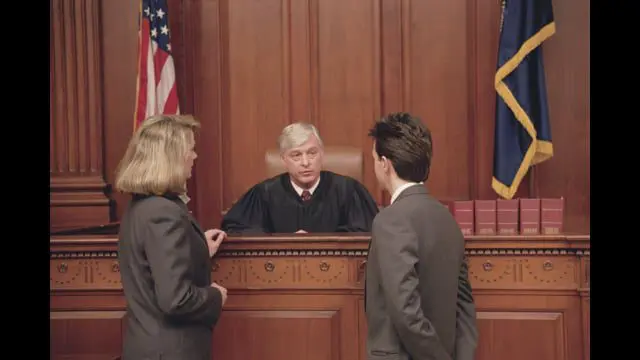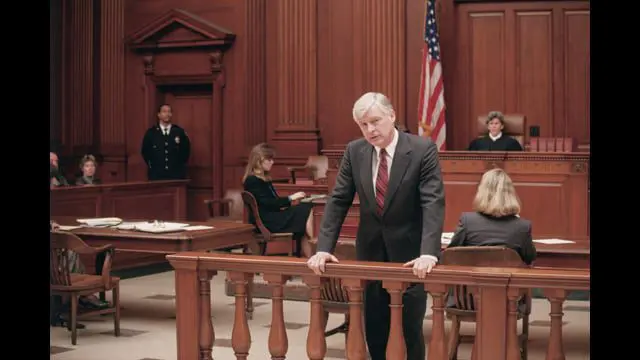In the realm of medical malpractice litigation, constructing a robust legal case para medical negligence requires meticulous preparation, expert knowledge, and strategic execution. The process of building a strong claim involves gathering compelling evidence, understanding complex medical procedures, and navigating intricate legal standards. As medical professionals are held to a high standard of care, demonstrating that this standard was breached and directly resulted in harm to the patient is paramount to a successful medical malpractice lawsuit.
The foundation of any medical negligence claim rests on establishing four key elements: duty, breach, causation, and damages. The plaintiff must prove that a doctor-patient relationship existed, creating a duty of care. This duty must have been breached by the healthcare provider failing to meet the accepted standard of care. The breach must be shown to have directly caused injury to the patient, and quantifiable damages must have resulted from this injury. These elements form the bedrock upon which a strong legal case is built, and each must be substantiated with clear and convincing evidence.
Gathering evidence is a critical step in building a formidable medical negligence claim. This process begins with obtaining comprehensive historial médico, which serve as a detailed account of the patient’s treatment history, diagnoses, and procedures. These records can reveal discrepancies, errors, or omissions that may indicate negligence. Additionally, expert testimony from qualified medical professionals is often crucial in establishing the standard of care and demonstrating how it was breached. Experts can provide invaluable insights into complex medical issues, translating technical jargon into terms that judges and juries can understand.
El papel de expert witnesses in medical malpractice cases cannot be overstated. These professionals are typically physicians or specialists in the same field as the defendant, possessing the knowledge and experience to evaluate the actions taken in the case. Their testimony can elucidate whether the care provided deviated from accepted medical practices and whether this deviation led to the patient’s injuries. Selecting the right expert witnesses is a strategic decision that can significantly impact the strength of a medical negligence claim.
In addition to medical records and expert testimony, other forms of evidence can bolster a medical negligence case. Photographic or video evidence of injuries, medical equipment, or facility conditions may provide visual support for the claim. Witness statements from family members, friends, or other healthcare providers who observed the patient’s condition or treatment can offer additional perspectives. Financial records demonstrating the economic impact of the alleged malpractice, including medical bills, lost wages, and future care costs, are essential in quantifying damages.
One of the most challenging aspects of building a strong medical negligence case is establishing causation. This requires demonstrating a direct link between the healthcare provider’s negligente actions and the patient’s injuries. In some cases, this connection may be clear, such as when a surgical instrument is left inside a patient. However, in many instances, the causal relationship is more complex and may involve multiple factors. Skilled attorneys must work closely with medical experts to construct a compelling narrative that clearly illustrates how the provider’s negligence led to the patient’s harm.
The legal landscape of medical malpractice is constantly evolving, with state laws varying significantly in terms of statutes of limitations, damage caps, and procedural requirements. Staying abreast of these legal nuances is crucial for attorneys building medical negligence cases. For instance, many states have implemented tort reform measures that place limits on non-economic damages, such as pain and suffering. Understanding these limitations is essential in managing client expectations and developing appropriate legal strategies.
One emerging trend in medical malpractice litigation is the increasing focus on systemic issues within healthcare organizations. While individual provider negligence remains a common basis for claims, there is growing recognition that organizational failures, such as inadequate policies, insufficient staffing, or flawed communication systems, can contribute to patient harm. Building a strong case may involve investigating these broader systemic issues and potentially expanding the scope of liability beyond individual practitioners to include healthcare facilities or administrative entities.
The rise of electronic health records (EHRs) has introduced new complexities and opportunities in building medical negligence cases. While EHRs can provide a more comprehensive and accessible record of patient care, they also present challenges in terms of data integrity, user interface issues, and the potential for electronic errors. Attorneys must be adept at navigating these digital systems and understanding how EHR-related factors may contribute to or mitigate claims of negligence.
Another critical aspect of building a strong medical negligence case is addressing the issue of informed consent. Patients have the right to be fully informed about the risks and benefits of medical procedures and to make decisions about their care based on this information. Failure to obtain proper informed consent can be grounds for a malpractice claim, even if the procedure itself was performed competently. Attorneys must carefully examine the consent process, including the documentation provided to patients and the discussions that took place between healthcare providers and patients.
El concepto de standard of care is central to medical negligence claims and requires careful consideration when building a case. This standard is not a fixed set of rules but rather a benchmark of what a reasonably competent medical professional would do under similar circumstances. Establishing the applicable standard of care often involves a detailed analysis of medical literature, professional guidelines, and expert opinions. Attorneys must be prepared to articulate clearly how the defendant’s actions fell short of this standard and why this deviation constitutes negligence.
In recent years, there has been an increased focus on patient safety initiatives and quality improvement programs within healthcare institutions. While these efforts are primarily aimed at reducing medical errors and improving patient outcomes, they can also impact medical negligence cases. Evidence of a healthcare provider’s adherence to or deviation from established safety protocols can be significant in building a case. Additionally, data from quality improvement programs may provide insights into systemic issues or patterns of care that could support a negligence claim.
The role of technology in healthcare has expanded rapidly, introducing new considerations in medical negligence cases. Telemedicine, artificial intelligence-assisted diagnostics, and robotic surgical systems are just a few examples of technologies that can complicate the determination of negligence. Building a strong case may require a thorough understanding of these technologies, their limitations, and the standards governing their use. Attorneys may need to work with technology experts in addition to medical experts to fully explore these aspects of a case.
Another important factor in building a strong medical negligence case is understanding and addressing potential defenses that may be raised by the defendant. Common defenses include arguments that the injury was a known risk of the procedure, that the patient’s own actions contributed to the harm, or that the care provided was within the accepted standard even if the outcome was poor. Anticipating and preparing to counter these defenses is crucial in developing a robust case strategy.
El proceso de descubrimiento plays a vital role in building a medical negligence case. This phase allows attorneys to gather additional evidence through depositions, interrogatories, and requests for documents. Effective use of discovery tools can uncover crucial information, such as internal hospital policies, staff training records, or communications that may support the negligence claim. Skilled attorneys know how to craft targeted discovery requests and how to use the information obtained to strengthen their case.
Expert witnesses play a crucial role in medical negligence cases, serving as the bridge between complex medical concepts and the legal standards that must be met. These experts not only provide testimony on the standard of care but also help attorneys understand the nuances of medical procedures, interpret test results, and identify potential areas of negligence that may not be apparent to non-medical professionals. The selection and preparation of expert witnesses is a critical component of building a strong case.
In some medical negligence cases, the concept of res ipsa loquitur may apply. This legal doctrine allows the plaintiff to establish negligence based on the circumstances of the injury alone, without direct evidence of how the defendant was negligent. For example, if a surgical instrument is left inside a patient, the very fact that this occurred may be sufficient to infer negligence. While not applicable in all cases, understanding when and how to apply this doctrine can be a powerful tool in building a medical negligence claim.
The impact of medical negligence extends beyond the immediate physical harm to the patient. When building a strong case, it’s important to consider and document the full range of damages suffered. This may include long-term medical care needs, loss of earning capacity, emotional distress, and loss of enjoyment of life. In some cases, family members may also have claims for loss of consortium or companionship. A comprehensive approach to damages can significantly strengthen the overall case.
One challenging aspect of medical negligence cases is dealing with situations where multiple healthcare providers were involved in the patient’s care. Determining which provider or providers were negligent and to what degree can be complex. Building a strong case in these situations often requires a thorough analysis of each provider’s role, the handoffs between providers, and how communication or lack thereof may have contributed to the patient’s harm. This may involve bringing claims against multiple defendants or carefully selecting the most appropriate target for the lawsuit.
The issue of causation in medical negligence cases can be particularly complex when dealing with patients who had pre-existing conditions or were already seriously ill. In these situations, defendants may argue that the patient’s poor outcome was due to their underlying condition rather than any negligence. Building a strong case requires carefully distinguishing between the harm caused by the negligence and the patient’s baseline condition. This often involves detailed medical analysis and expert testimony to demonstrate how the negligent care specifically worsened the patient’s condition or prognosis.
In recent years, there has been increased attention to the role of implicit bias in healthcare and how it may contribute to medical negligence. Bias based on race, gender, age, or other factors can affect diagnosis, treatment decisions, and the overall quality of care provided. When building a medical negligence case, it may be relevant to consider whether implicit bias played a role in the care provided and whether this contributed to the harm suffered by the patient. This can be a sensitive and complex issue to navigate but may be crucial in certain cases.
El concepto de defensive medicine – the practice of recommending tests or treatments that may not be medically necessary to avoid potential lawsuits – is often raised in discussions of medical malpractice. When building a medical negligence case, it’s important to be aware of this concept and how it might be used as a defense. Attorneys may need to demonstrate that the standard of care requires more than simply ordering every possible test or treatment, but rather making judicious and patient-centered decisions based on medical evidence and professional judgment.
In some medical negligence cases, the harm to the patient may not be immediately apparent or may develop over time. This can complicate the process of building a strong case, particularly in relation to statutes of limitations. Attorneys must be vigilant in identifying potential long-term consequences of medical negligence and ensuring that these are properly documented and included in the claim. This may involve working with medical experts to project future medical needs and costs associated with the negligent care.
El papel de medical device manufacturers and pharmaceutical companies in medical negligence cases is an area of increasing focus. In some instances, a patient’s harm may be due not only to provider negligence but also to defective medical devices or dangerous drugs. Building a strong case may involve exploring these potential avenues of liability and considering whether to include product liability claims alongside medical negligence claims. This requires a thorough understanding of both medical malpractice and product liability law.
Another important aspect of building a strong medical negligence case is understanding and addressing the emotional and psychological impact on the patient and their family. While the physical harm caused by medical negligence is often the primary focus, the emotional trauma, loss of trust in healthcare providers, and impact on quality of life can be significant. Documenting these non-economic damages and presenting them effectively can be crucial in building a compelling case for compensation.
El proceso de medical peer review, in which healthcare providers evaluate the performance of their colleagues, can be relevant in building a medical negligence case. While peer review records are often protected from discovery, the fact that a peer review was conducted and its general outcomes may be admissible in some jurisdictions. Understanding the role of peer review in the specific healthcare setting and how it might relate to the alleged negligence can provide valuable context for the case.
In cases involving surgical errors, building a strong case often requires a detailed understanding of the specific procedure, the potential risks, and the standard precautions that should be taken. This may involve analyzing operative reports, anesthesia records, and post-operative care documentation. Attorneys may need to work closely with surgical experts to identify deviations from standard practice and to explain complex surgical concepts in terms that can be understood by judges and juries.
The issue of hospital-acquired infections has become increasingly prominent in medical negligence cases. While not all infections are preventable, many can be attributed to lapses in hygiene protocols, inadequate sterilization procedures, or other systemic failures. Building a strong case involving hospital-acquired infections often requires a thorough investigation of the facility’s infection control practices, staffing levels, and adherence to established guidelines for preventing the spread of pathogens.
In cases involving diagnostic errors, building a strong medical negligence claim requires demonstrating that the healthcare provider failed to consider or properly investigate potential diagnoses that a reasonably competent provider would have considered under similar circumstances. This often involves a detailed analysis of the patient’s symptoms, test results, and the diagnostic process followed by the provider. Expert testimony is typically crucial in establishing what a proper diagnostic workup should have entailed and how the error led to harm.
El concepto de loss of chance is relevant in some medical negligence cases, particularly those involving delayed diagnosis or treatment of conditions like cancer. This doctrine allows for recovery when negligence reduces a patient’s chance of a better outcome, even if that chance was less than 50%. Building a strong case based on loss of chance requires careful analysis of medical literature and expert testimony to quantify the reduction in the patient’s chances of survival or improved outcome.
In cases involving emergency room errors, building a strong medical negligence claim must take into account the unique challenges of the emergency setting. The standard of care in emergency situations may differ from that in other medical contexts, given the time pressures and limited information often available. Attorneys must carefully analyze the specific circumstances of the emergency care provided and work with experts familiar with emergency medicine to establish how the care deviated from acceptable standards.
The issue of medical record alteration can significantly impact a medical negligence case. Electronic health records have made it easier to track changes to medical documentation, but have also created new opportunities for inappropriate alterations. Building a strong case may involve forensic analysis of electronic records to detect unauthorized changes or additions made after an adverse event. Evidence of record alteration can severely undermine a defendant’s credibility and strengthen the plaintiff’s case.
In cases involving medication errors, building a strong medical negligence claim requires a thorough understanding of pharmacology, dosing guidelines, and medication administration protocols. These errors can occur at various stages, from prescribing to dispensing to administration, and may involve multiple healthcare providers. Attorneys must carefully analyze each step in the medication process to identify where errors occurred and who may be liable.
El concepto de vicarious liability is important in many medical negligence cases, particularly those involving hospital employees or other healthcare workers acting under the supervision of a physician. Building a strong case may involve demonstrating that the negligent actions of an employee or agent should be attributed to the larger healthcare organization. This can expand the scope of potential compensation and address systemic issues that may have contributed to the negligence.
In conclusion, building a strong legal case for medical negligence claims is a complex and multifaceted process that requires a deep understanding of both medical and legal principles. It involves meticulous gathering and analysis of evidence, strategic selection and preparation of expert witnesses, and a comprehensive approach to documenting and presenting damages. As the healthcare landscape continues to evolve, with new technologies, changing practice patterns, and shifting legal standards, attorneys must stay informed and adaptable in their approach to these challenging cases. By carefully considering all aspects of the patient’s care, the applicable standards, and the full range of impacts on the patient’s life, skilled legal professionals can construct compelling arguments that seek justice for those harmed by medical negligence.
Website citations used for this article:
- https://www.frlawpa.com/medical-malpractice-claims-trends-and-their-impact-on-healthcare-providers
- https://www.finchmccranie.com/blog/the-silent-battle-how-to-win-your-medical-negligence-lawsuit/
- https://pmc.ncbi.nlm.nih.gov/articles/PMC2628513/
- https://www.medicalnewstoday.com/articles/248175
- https://plaintiffmagazine.com/recent-issues/item/emerging-trends-in-medical-malpractice-litigation
- https://medpli.com/medical-malpractice-trends-2024/
- https://loncarlyonjenkins.com/faqs/what-evidence-is-crucial-for-building-a-strong-medical-malpractice-case/
- https://www.findlaw.com/injury/medical-malpractice.html
- https://www.crcgroup.com/Tools-Intel/post/medical-malpractice-claims-trends
- https://mswlawgroup.com/a-comprehensive-guide-to-medical-malpractice-claims-how-to-build-a-strong-case/
- https://pmc.ncbi.nlm.nih.gov/articles/PMC3563820/
- https://www.levinperconti.com/successful-cases/medical-malpractice/
- https://www.americanbar.org/groups/public_education/resources/law_issues_for_consumers/everydaylaw0/health_care/personal_injury/medical_malpractice/
- https://www.gerlinglaw.com/what-makes-a-successful-medical-malpractice-case/
- https://www.jdsupra.com/legalnews/medical-negligence-and-paralysis-what-4193695/









